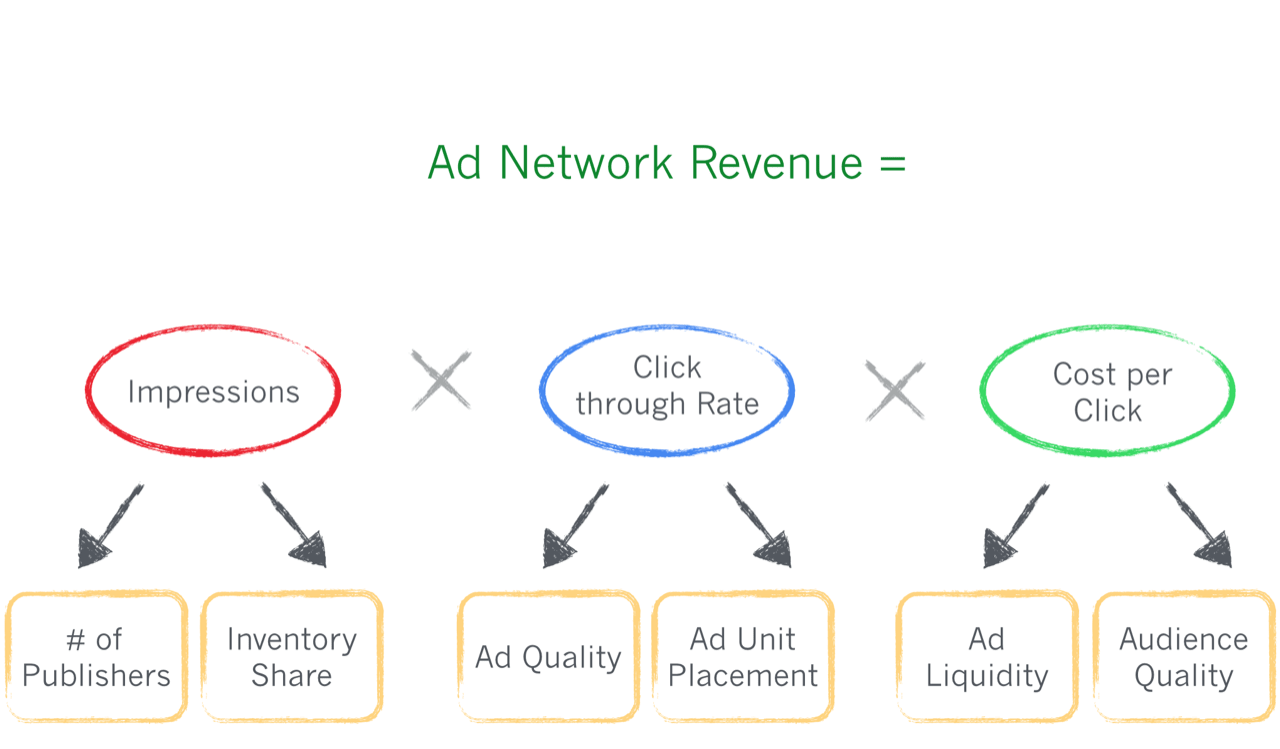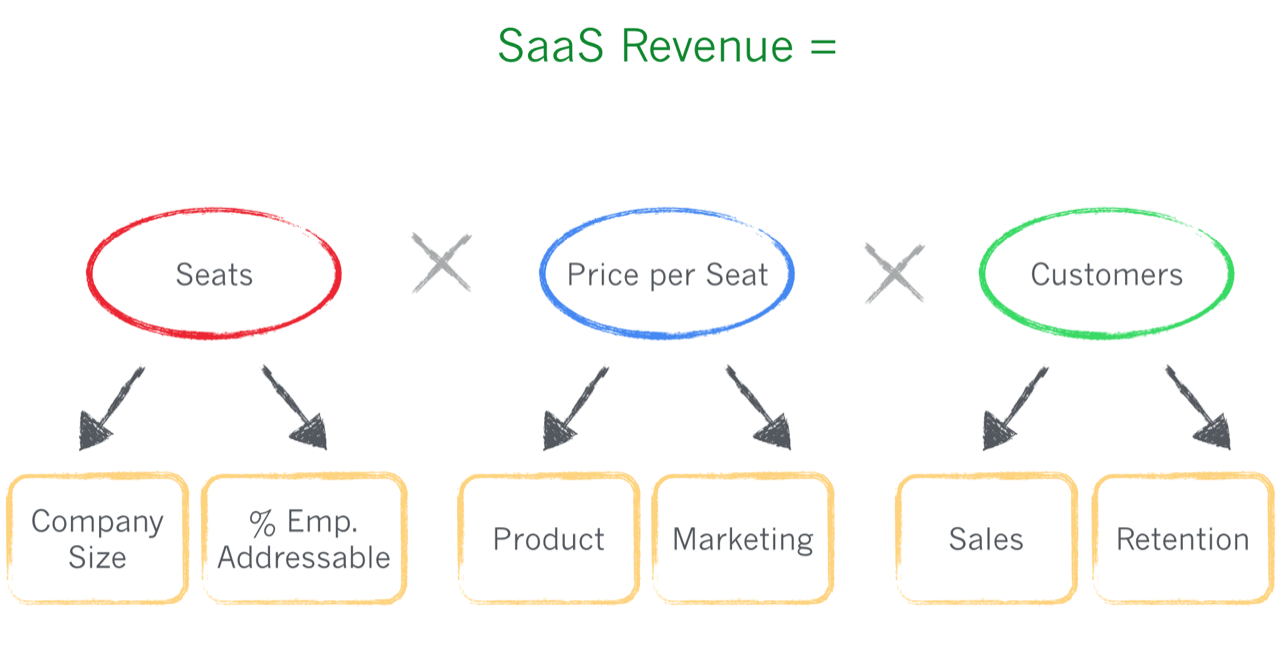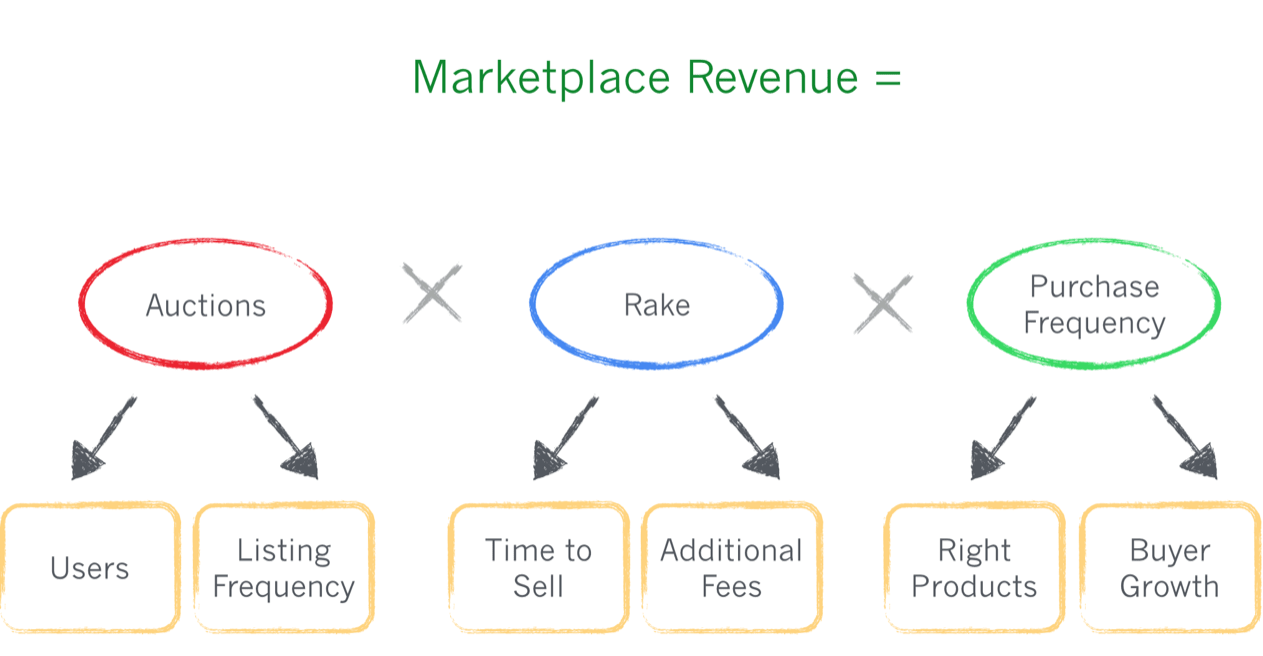“What is the one equation that describes our business?” asked Scott, our new director at Google, during one of our first meetings. I had been there only for a few quarters, so I was startled when he asked. I had never viewed our business this way, but after he asked the question, I wondered why I hadn’t. It seemed obvious in retrospect.
What started as a simple question became a complex and insightful exercise. Over his first week or so, through many interviews like mine, Scott developed that equation for AdSense and it filled a whiteboard. I’ve reproduced it above in a simplified form.
Scott plied the equation to grasp how the business worked. He refined and polished the equation, until he identified all the contributing parts to revenue. These questions led him to understand historical product development decisions, advertiser and publisher policies and the values of the company. They revealed the strengths of the company, but also made plain many assumptions underpinning previous decisions were no longer true. Identifying those inaccuracies and correcting them unlocked tremendous revenue growth.
The equation became an important management tool in our conversations. When we discussed new projects, Scott would ask me to point on the whiteboard where the project it fit within the equation - which lever the project impacted and whether the project could materially accelerate revenue growth. Boy, did it clarify priorities.
This equation remained on his office white board for years. Every time I walked past his office, I would glance at that equation, I’d smile. What an incisive management tool.
More than helping to question assumptions, prioritize projects and align teams, the idea of a single equation diagnose the best place to focus. A 5% increase in each of the top line metrics would bolster revenue by 5%. But a 5% increase in impressions meant more publisher acquisitions. In contrast, a 5% increase in cost per click implied more advertiser acquisition. Depending on the comparative unit economics of at the time, Scott could recommend the right path.
Here’s a first order equation for a SaaS company:
And one for a market place:
After that experience, I’ve come to believe using the fundamental equation of a business can be a terrific best practice for prioritizing key initiatives across product, marketing, sales and customer success. It’s also a great tool to elevate a team conversation from the everyday tasks to more strategic initiatives.


